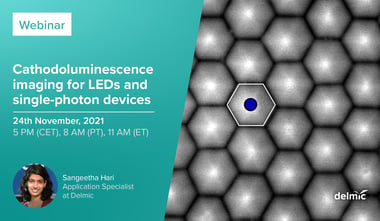Correlative light and electron microscopy (CLEM) is a powerful technique which makes it possible to combine the labelling power of fluorescence imaging with high resolution structural information acquired with electron imaging. This technique has been used for studying biological samples in the fields of marine microbiology, cancer research, neuroscience and, most recently, virology.
Our upcoming webinar is going to focus on studying giant viruses, a type of viruses found in environmental, animal, as well as human samples, with correlative light electron microscopy. Giant viruses are rarely studied with light microscopy due to the lack of access to their ultrastructure. However, because of their big size, they could be observed with fluorescence and their ultrastructure studied with electron microscopy (EM). Simultaneous CLEM combines these two techniques and allows us to both identify and study giant virus infected cells.
During the webinar, our application specialist Dr. Sangeetha Hari will in details describe the possibilities of integrated CLEM and its application in the field of virology. The webinar will also include dedicated time for Q&A, so if you have always wanted to know how this technique can be applied in your field, this is a great chance to get an answer.
The webinar will be focused on:
- explanation of CLEM technique
- brief outline of possible applications in biology
- studying giant viruses with CLEM
.png)






